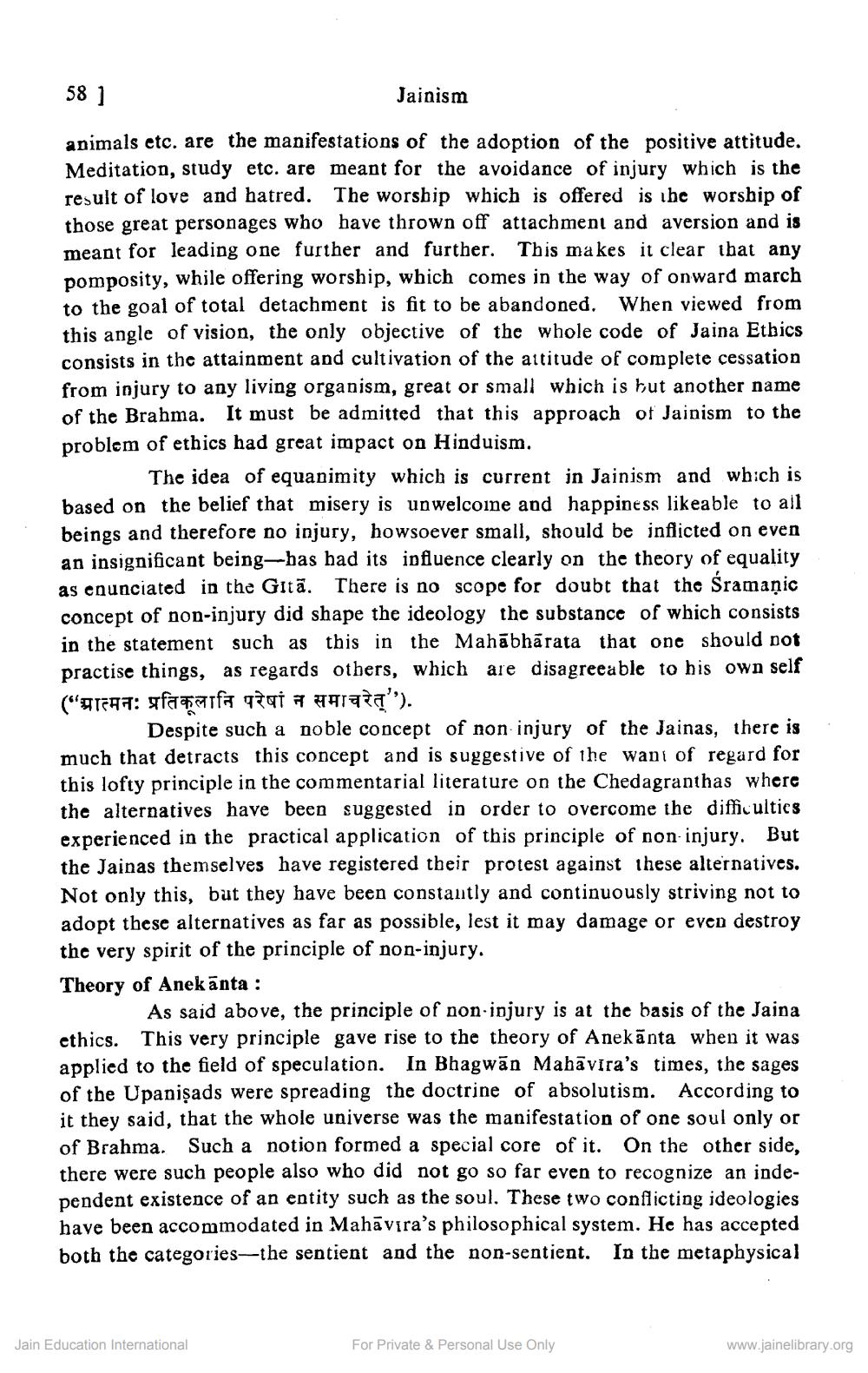________________
58 1
animals etc. are the manifestations of the adoption of the positive attitude. Meditation, study etc. are meant for the avoidance of injury which is the result of love and hatred. The worship which is offered is the worship of those great personages who have thrown off attachment and aversion and is meant for leading one further and further. This makes it clear that any pomposity, while offering worship, which comes in the way of onward march to the goal of total detachment is fit to be abandoned. When viewed from this angle of vision, the only objective of the whole code of Jaina Ethics consists in the attainment and cultivation of the attitude of complete cessation from injury to any living organism, great or small which is but another name of the Brahma. It must be admitted that this approach of Jainism to the problem of ethics had great impact on Hinduism.
Jainism
The idea of equanimity which is current in Jainism and which is based on the belief that misery is unwelcome and happiness likeable to all beings and therefore no injury, howsoever small, should be inflicted on even an insignificant being-has had its influence clearly on the theory of equality as enunciated in the Gita. There is no scope for doubt that the Śramanic concept of non-injury did shape the ideology the substance of which consists in the statement such as this in the Mahabharata that one should not practise things, as regards others, which are disagreeable to his own self ( " आत्मनः प्रतिकूलानि परेषां न समाचरेत् ").
Despite such a noble concept of non injury of the Jainas, there is much that detracts this concept and is suggestive of the want of regard for this lofty principle in the commentarial literature on the Chedagranthas where the alternatives have been suggested in order to overcome the difficulties experienced in the practical application of this principle of non injury. But the Jainas themselves have registered their protest against these alternatives. Not only this, but they have been constantly and continuously striving not to adopt these alternatives as far as possible, lest it may damage or even destroy the very spirit of the principle of non-injury.
Theory of Anekanta :
As said above, the principle of non-injury is at the basis of the Jaina ethics. This very principle gave rise to the theory of Anekanta when it was applied to the field of speculation. In Bhagwan Mahavira's times, the sages of the Upanisads were spreading the doctrine of absolutism. According to it they said, that the whole universe was the manifestation of one soul only or of Brahma. Such a notion formed a special core of it. On the other side, there were such people also who did not go so far even to recognize an independent existence of an entity such as the soul. These two conflicting ideologies have been accommodated in Mahavira's philosophical system. He has accepted both the categories-the sentient and the non-sentient. In the metaphysical
Jain Education International
For Private & Personal Use Only
www.jainelibrary.org




